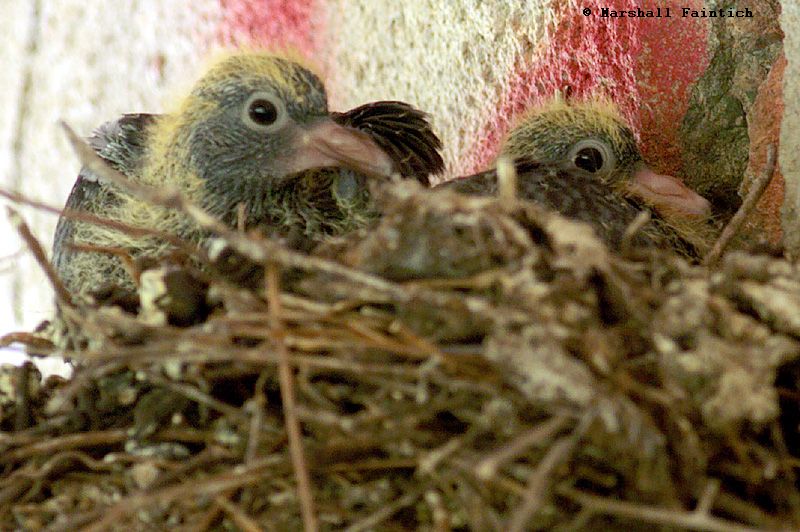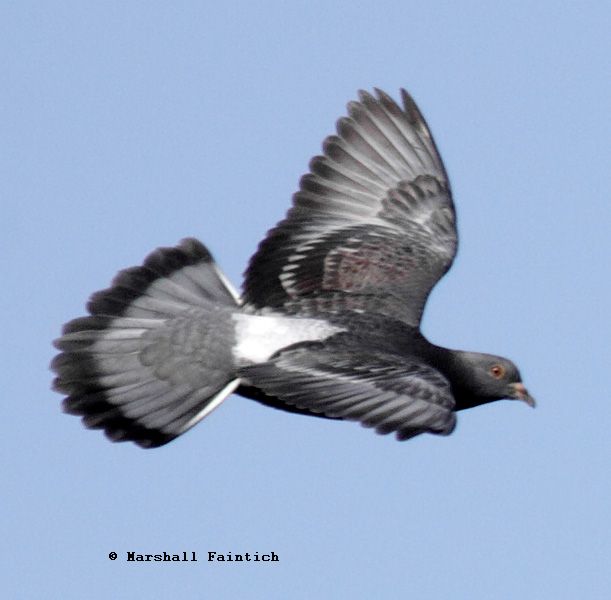A
wild-type or blue bar feral pigeon (Columba
livia). This bird is a beautiful example of the
standard used by pigeon geneticists. Note the orange-red
(wild-type) eye; the whitish rump patch; iridescence on the neck blend;
power-white nasal cere. Other things to note - this bird is
molting, you can see that it's dropped its sixth primary flight
(remiges) (counting outward from the body towards the wing tip.
You can easily see the coloration difference caused by sun bleaching on
the older feathers between the newly molted in flights 1, 2, 3, 4, 5
from the still to be molted 7,8,9,10. Flight 6 isn't showing and
was likely molted soon before this shot was taken. Okay that's
all demonstrable and evident just by looking.
Here's where I go out on a limb and pass on a bit of arcane pigeon breeder
knowledge that I was shown some forty years ago by an older breeder who
got it from breeders with experience dating back to the latter part of
the 19th century. I've demonstrated it to myself in my own
lofts to my own satisfaction over the years. However, I've never
documented it and I leave this for a newer breeder or scientist.
I'm going to state that this bird is likely a two-year-old.
Here's why. Look at primary flights 1 & 2 - again counting
from nearer the body. Look at the feather shafts on these
flights. Notice that the shafts come almost straight down the
feather to the tip. It's almost a perfect 180 degrees. Now
look at primary flight 3 and on. Notice that the shaft doesn't
come straight to the tip but curves off just a bit before reaching
it. When I was a young man, an older breeder told me that before
they had bands to keep records, it was essential that a breeder knew
his birds and their ages in case one strayed off. For at
least the first two or three years, this straightening of the shaft of
the primary seems to hold true. Just in my own lofts and
from a very non-scientific memory, I'd say it's fairly accurate about
90% of the time. It also doesn't seem to continue past the first
three primaries. I'd love to see some breeder today keep records
and flight feather samples to see if anything I've said here is
actually accurate or just something I've led myself to believe because
I was told it as a boy. Beside, I seriously believe that the more than three millenia of practical pigeon breeding knowledge we're heir too should often be examined when practical in light of scientific thought and findings.

Baby
pigeons in the nest. From the amount of feather growth on these
two, I'd say they're about 10-12 days old. Note the fleshy
looking nasal cere and dark, juvenile colored eye.
Return
to Home Page
